Law of Sine and Cosine Rule – GCSE Maths
Introduction
- Laws of Sine and Cosine are trigonometric formulas used to solve triangles when certain information is given.
- They are especially useful for non-right triangles.
- These laws are fundamental in trigonometry and have applications in physics, engineering, and navigation.
What is the Sine Rule?
- The Sine Rule is a fundamental trigonometric formula that relates the sides of a triangle to the sines of their opposite angles.
- Mathematically,
For any triangle with sides a, b and c opposite angles A, B and C respectively, for finding missing side:

Alternatively, it can be written as for finding missing angle:

Where:
- a, b and c are the lengths of the sides of the triangle
- A, B and C are the angles opposite those sides
 Solved Example
Solved Example
Problem: A = 40∘, B = 60∘ and side a = 10 cm. Find side b.
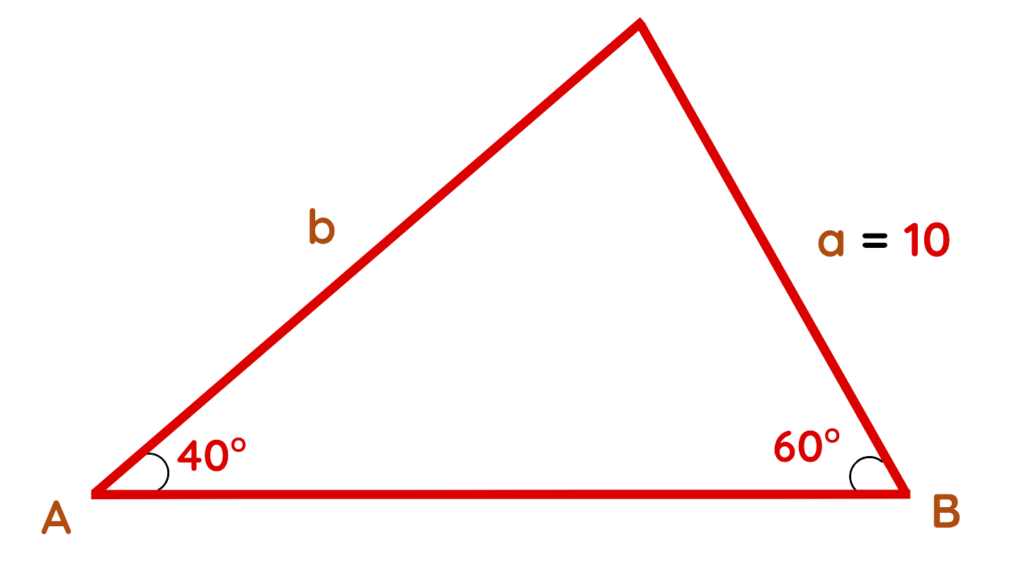
Solution:
Use the formula

Put the values:
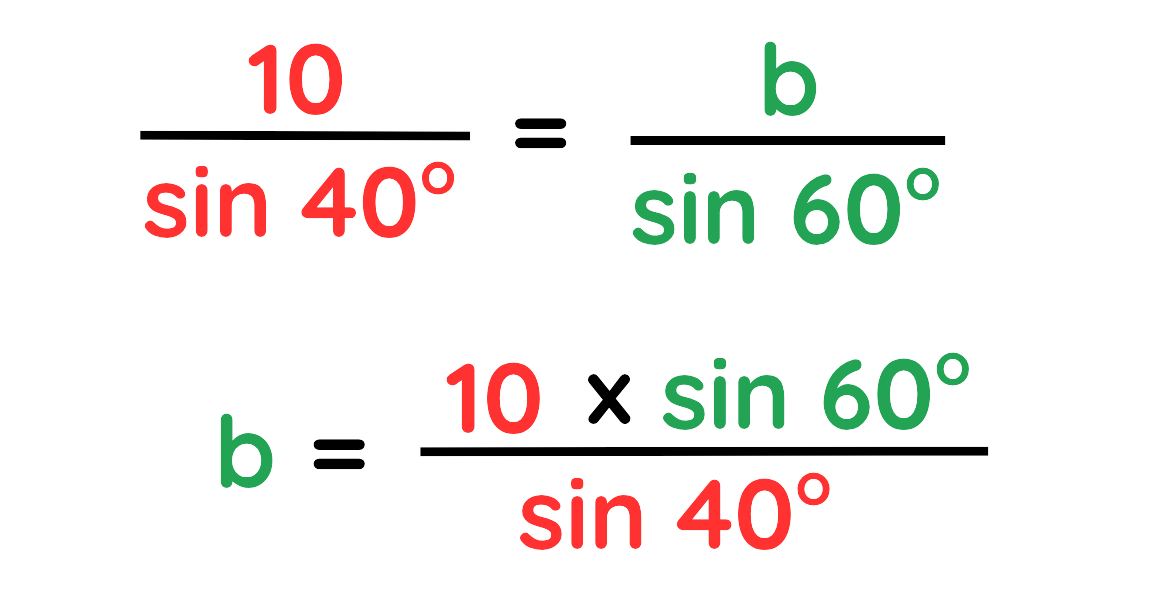
Now calculate using a calculator:
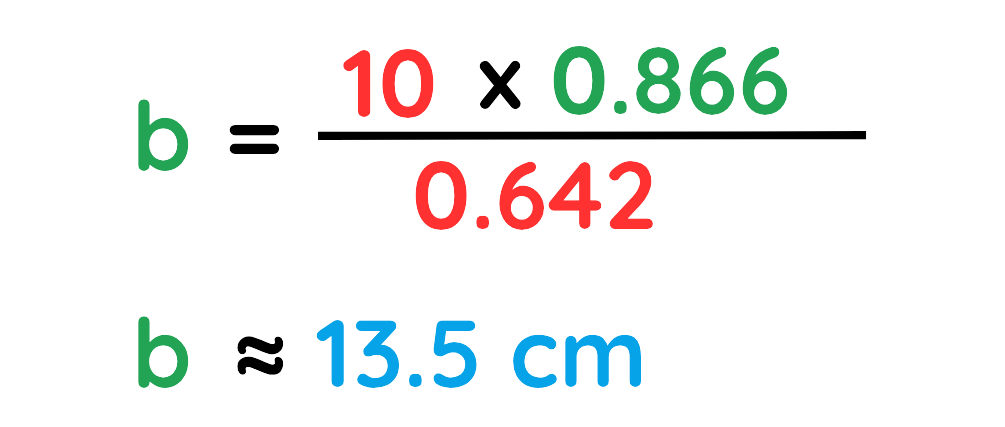
Final Answer: b = 13.5 cm
What is the Cosine Rule?
- The Cosine Rule is also a trigonometric formula used to find a side or angle in a triangle.
- It works for any triangle whether it’s acute, obtuse, or right-angled.
- Mathematically,
For any triangle with sides a, b and c opposite angles A, B and C opposite those sides:

If you know all three sides, then we can find an angle using this rearranged version of the cosine rule:

Where:
- a, b and c are the lengths of the sides of the triangle.
- A, B and C are the angles opposite those sides.
 Solved Example
Solved Example
Problem: Side a = 5cm, side b = 7 cm, angle C = 60∘. Find side c.
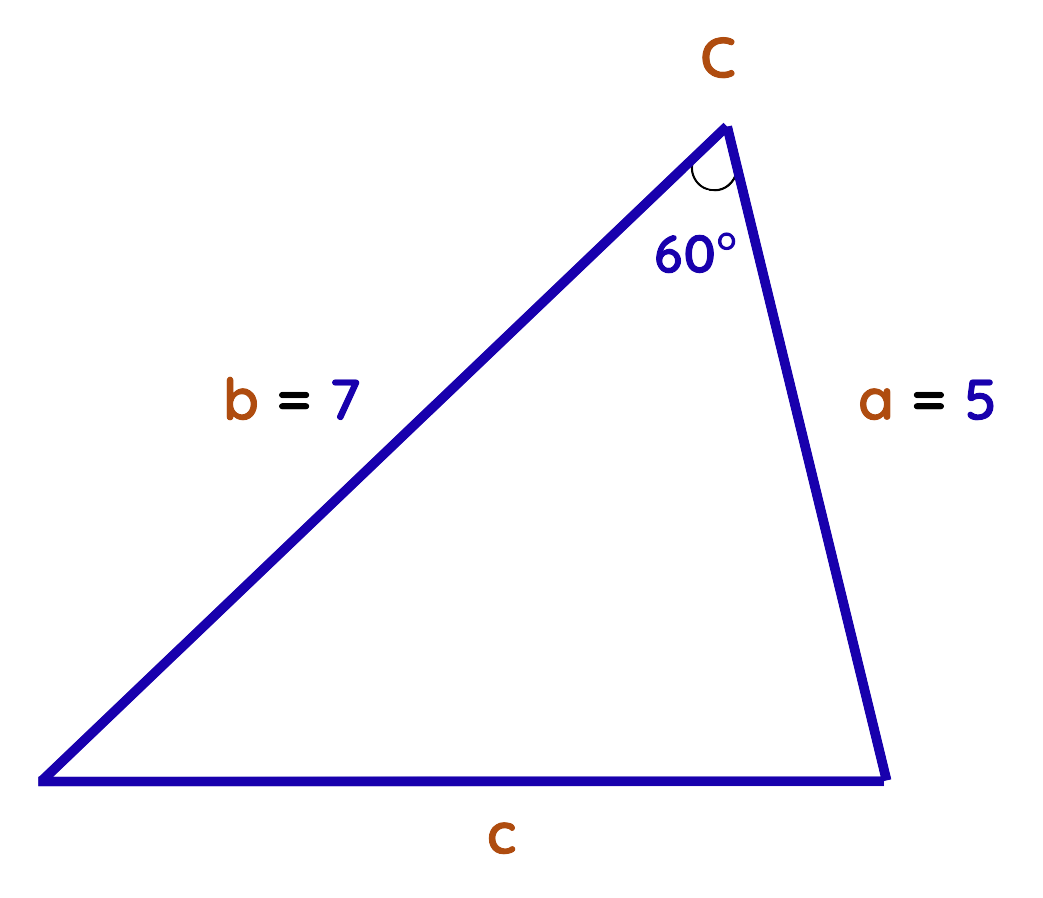
Solution:
Use the formula:

Put the values:
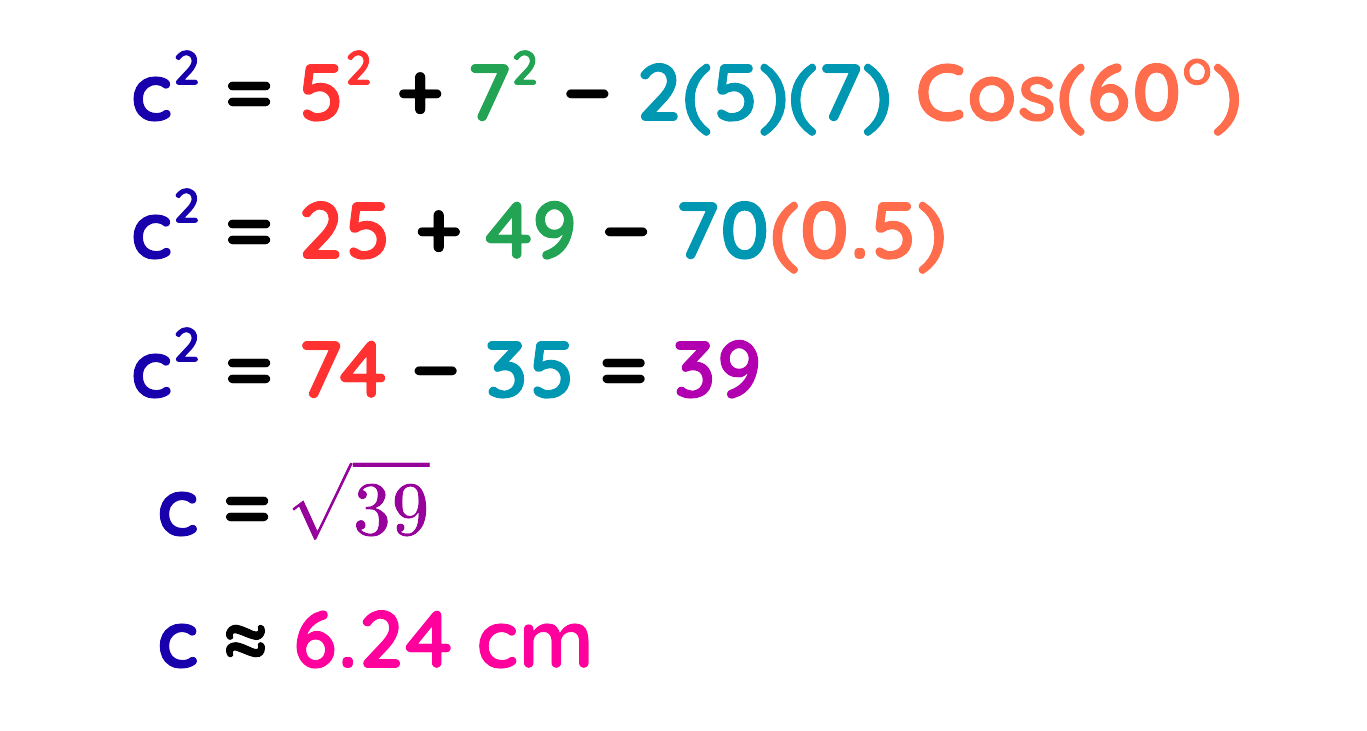
Final Answer: c = 6.24 cm
How to Find Missing Side and Angle?
- The Sine Rule or the Cosine Rule, both are used to find the missing side or missing angle depending on what information is given in the question.
Use the Sine Rule:
- If we know the 2 angles and one side, then we use it to find another side
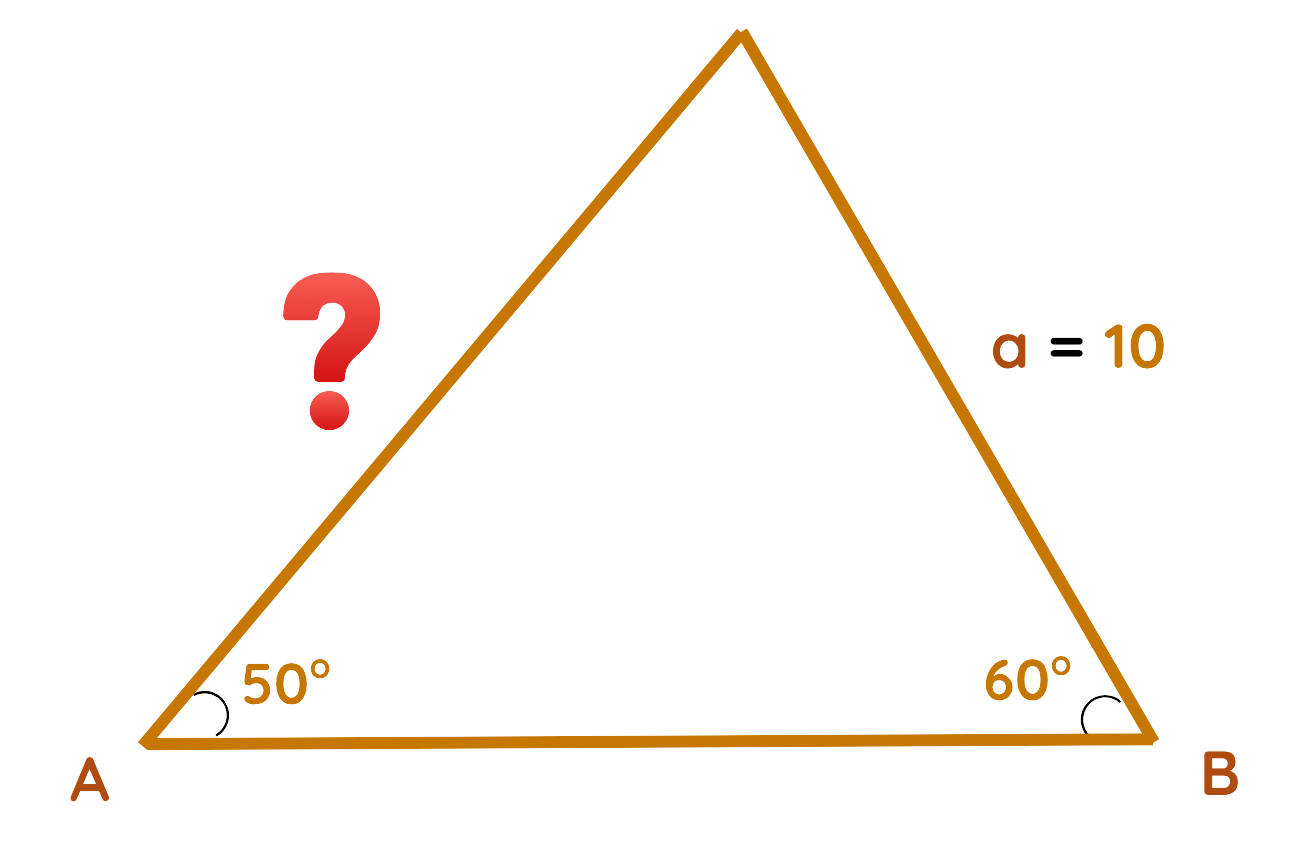
- If we know the 2 sides and one non-included angle, then we use it to find the other angle.
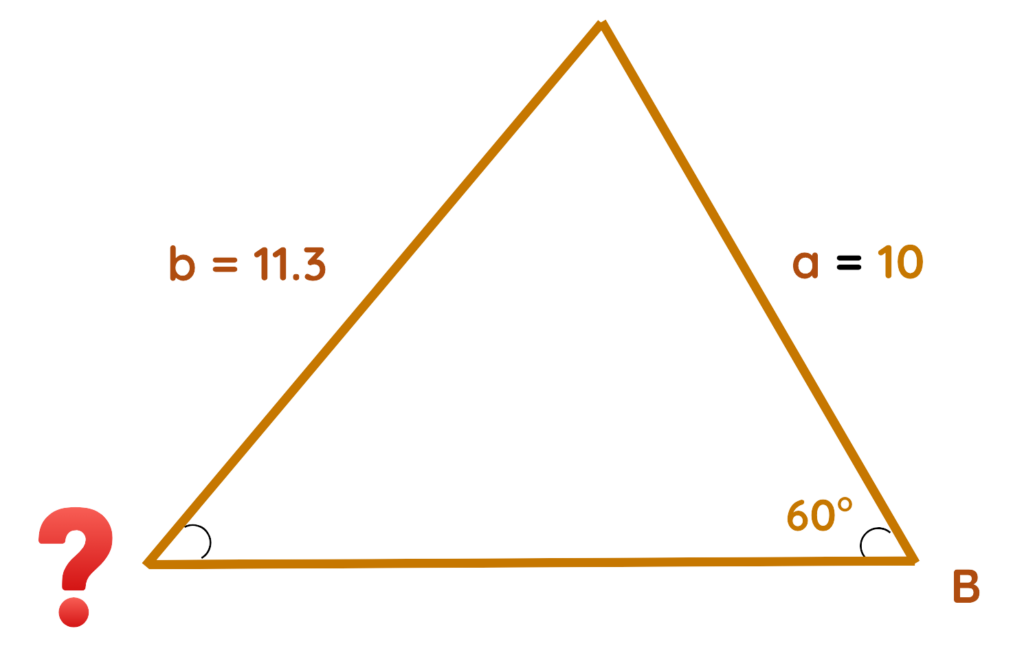
Use the Cosine Rule:
- If we know the 2 sides and one included angle, then we use it to find third side.
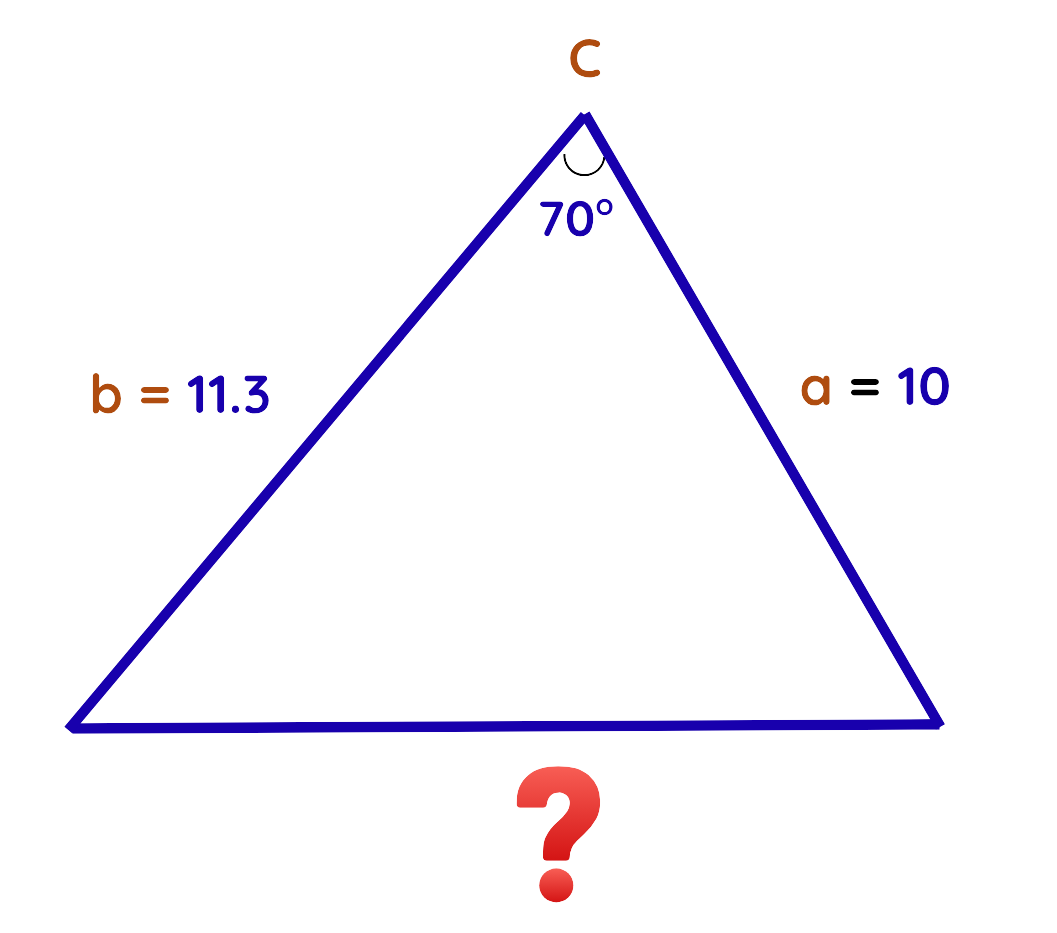
- If we know all the three sides, then we use it to find any angle.
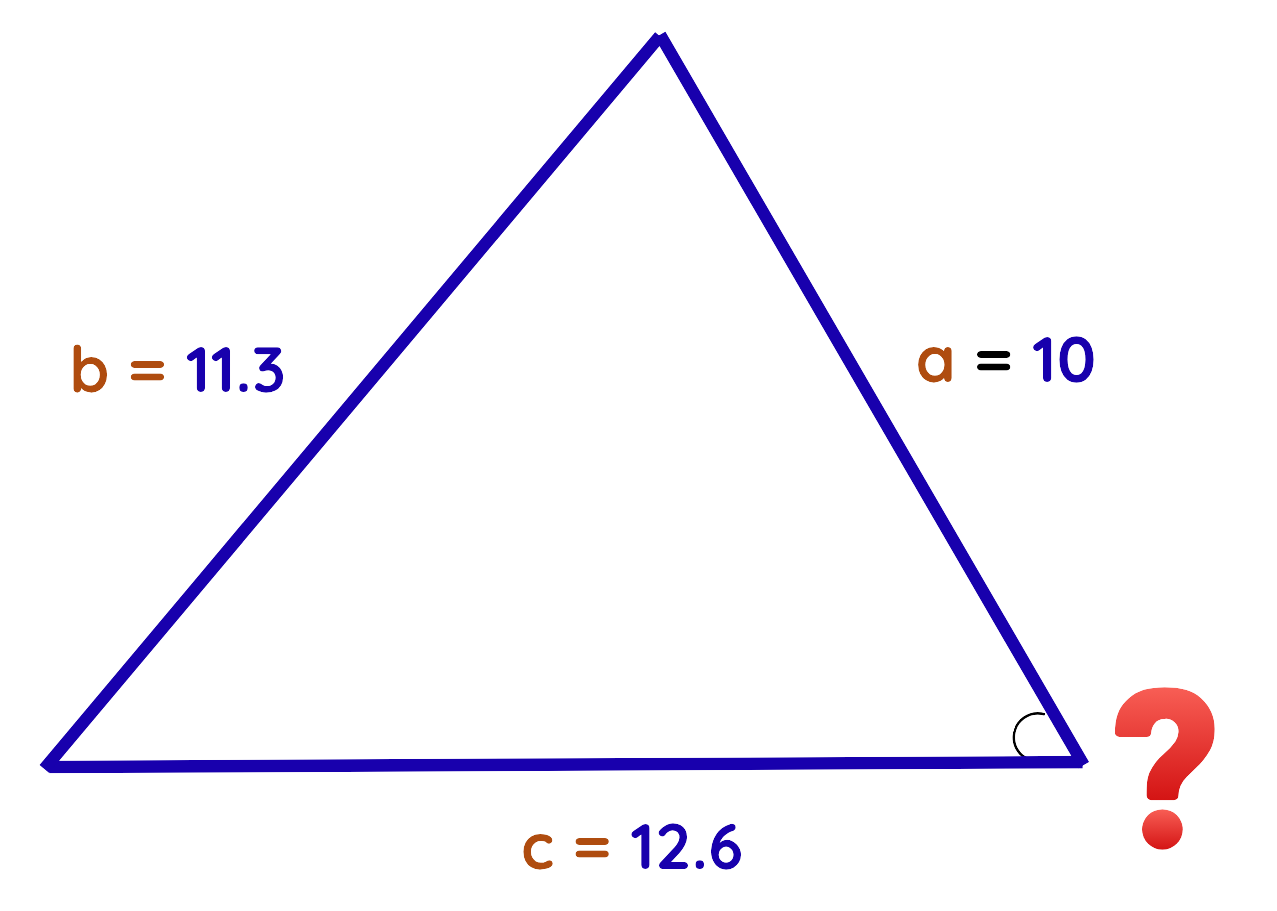
Steps to Find the Missing Side or Angle:
- Step#1: Identify the known values.
- Step#2: Write the formula based on the side or angle you’re finding.
- Step#3: Plug the values.
- Step#4: Solve for the missing value.
 Solved Example
Solved Example
Problem: In Triangle ABC, Side a = 10cm, Side b = 14cm and Angle A = 45°. Find angle B.
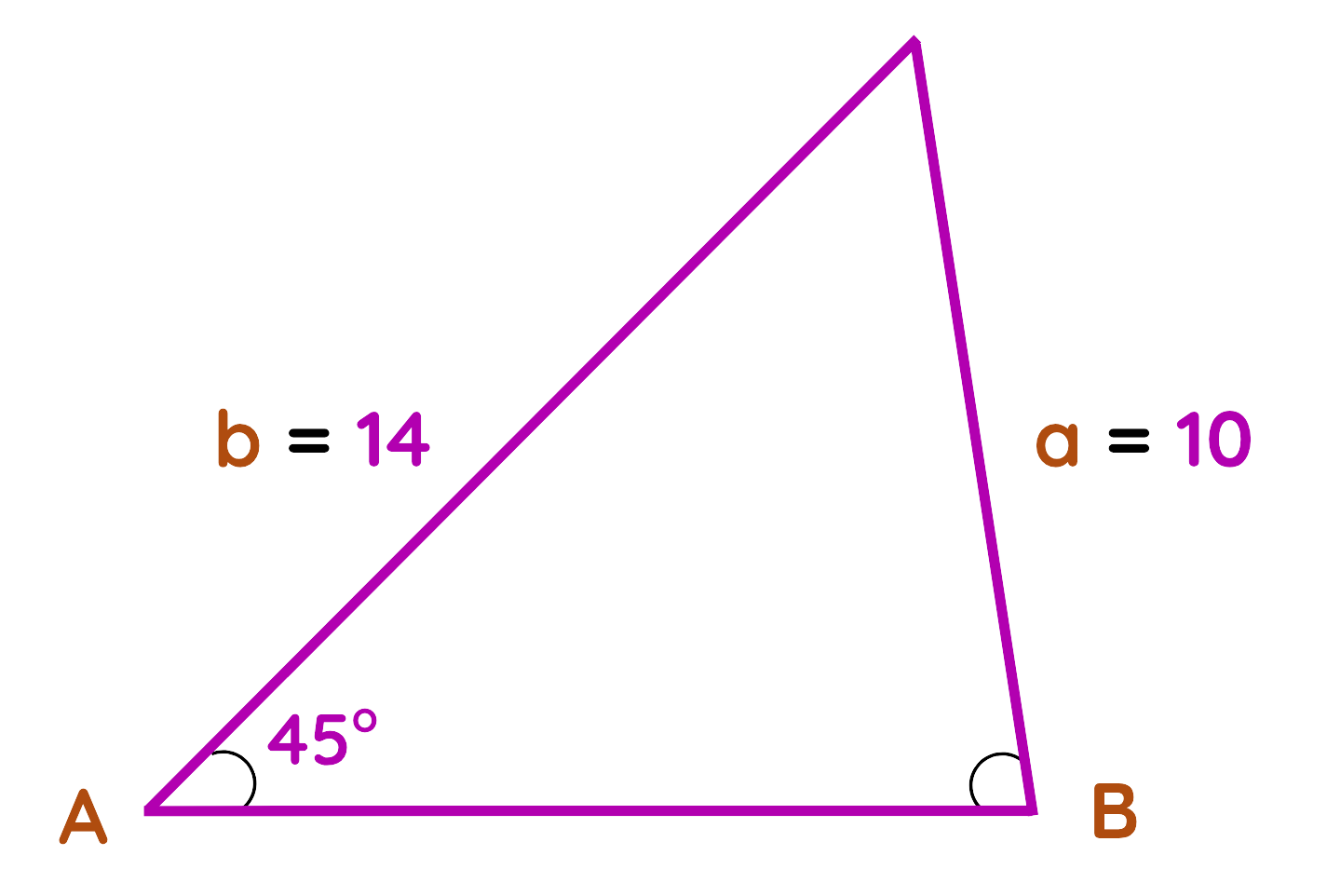
Solution:
Step#1: Given:
- Side a = 10 cm
- Side b = 14 cm
- Angle A = 45°
Step#2: Use The Formula:

Step#3: Plug the values:

Step#4: Solve for the missing angle:
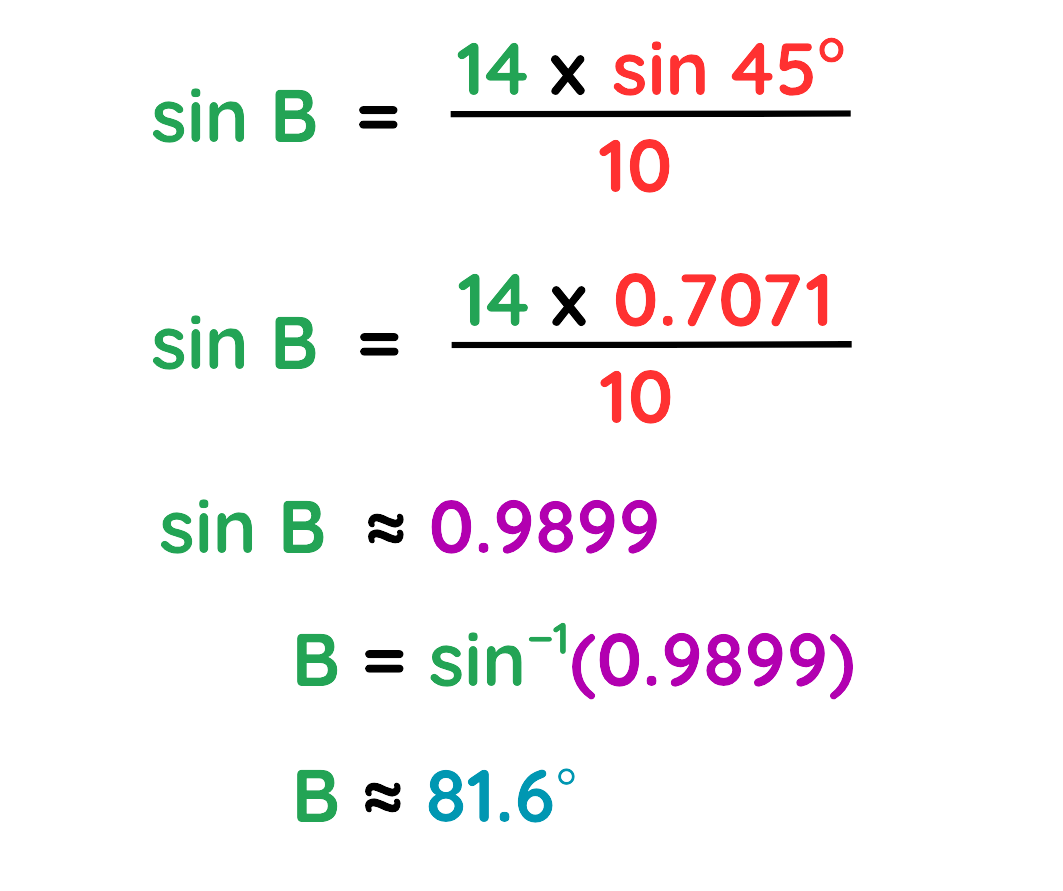
The Missing angle of B ≈ 81.6°
Final Answer: B ≈ 81.6°
 Solved Example
Solved Example
Problem: In Triangle ABC, Side a = 7cm, Side b = 8cm and Side c = 9cm. Find angle C.
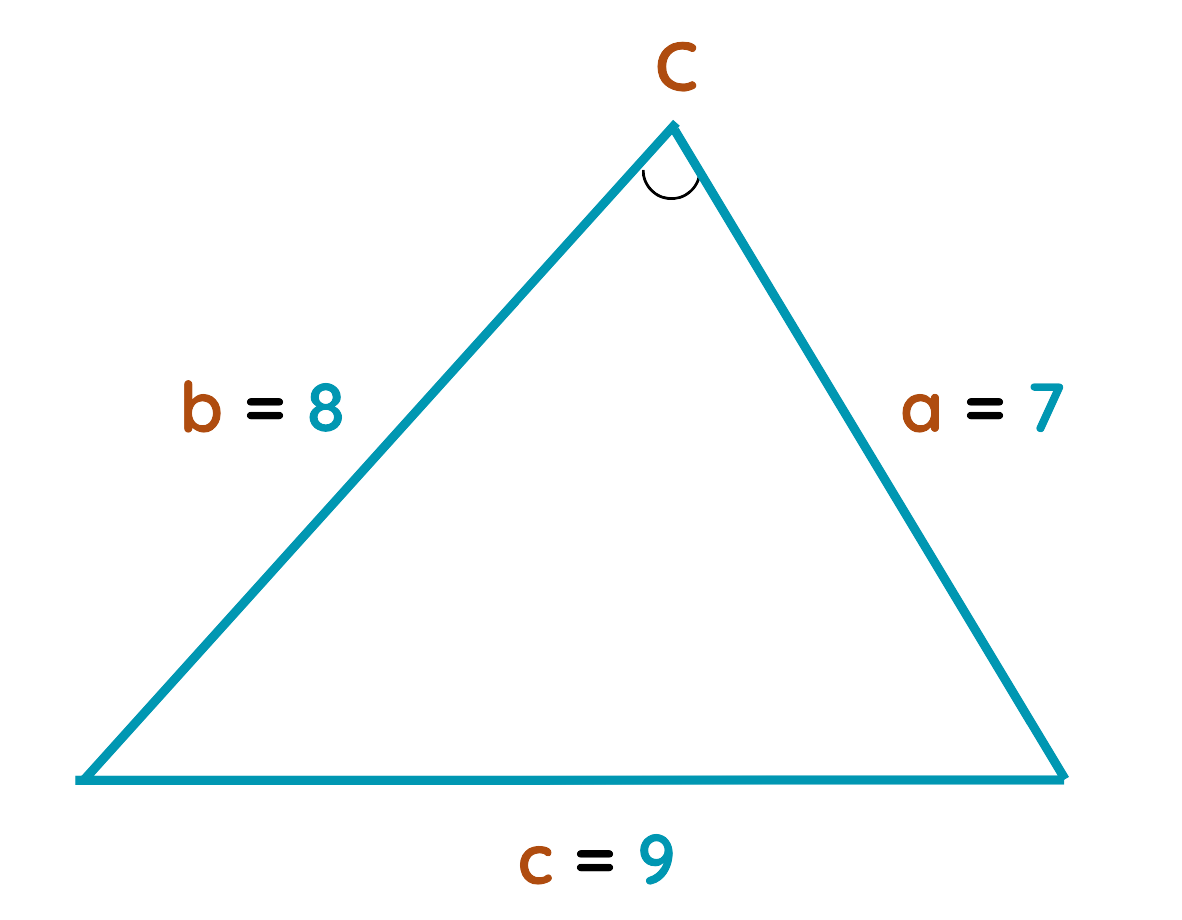
Solution:
Step#1: Given:
- Side a = 7cm
- Side b = 8cm
- Side c = 9cm
Step#2: Use The Formula:

Step#3: Plug the values:

Step#4: Solve for the missing angle:
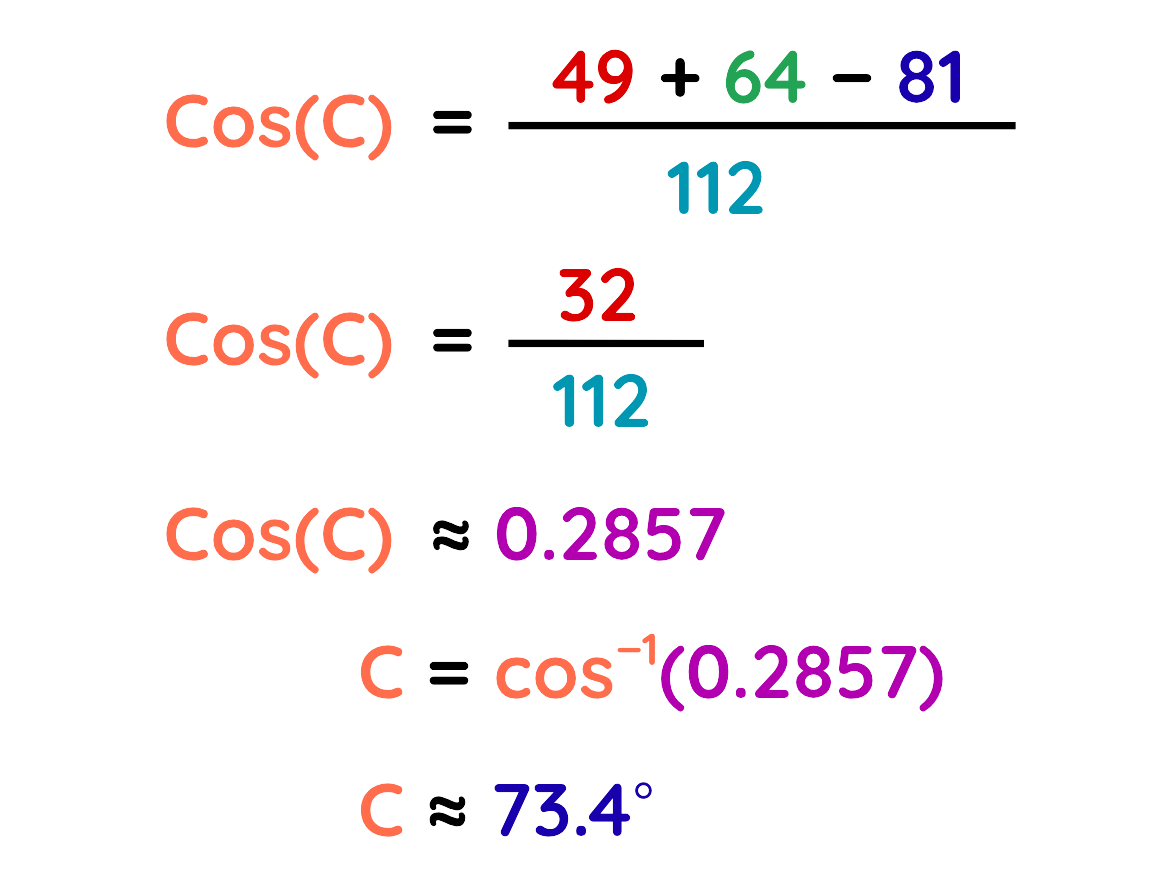
The Missing angle of C ≈ 73.4°
Final Answer: C ≈ 73.4°
 Solved Example
Solved Example
Problem: In Triangle ABC, Angle A = 50°, Angle B = 60° and Side a = 10cm. Find side b.
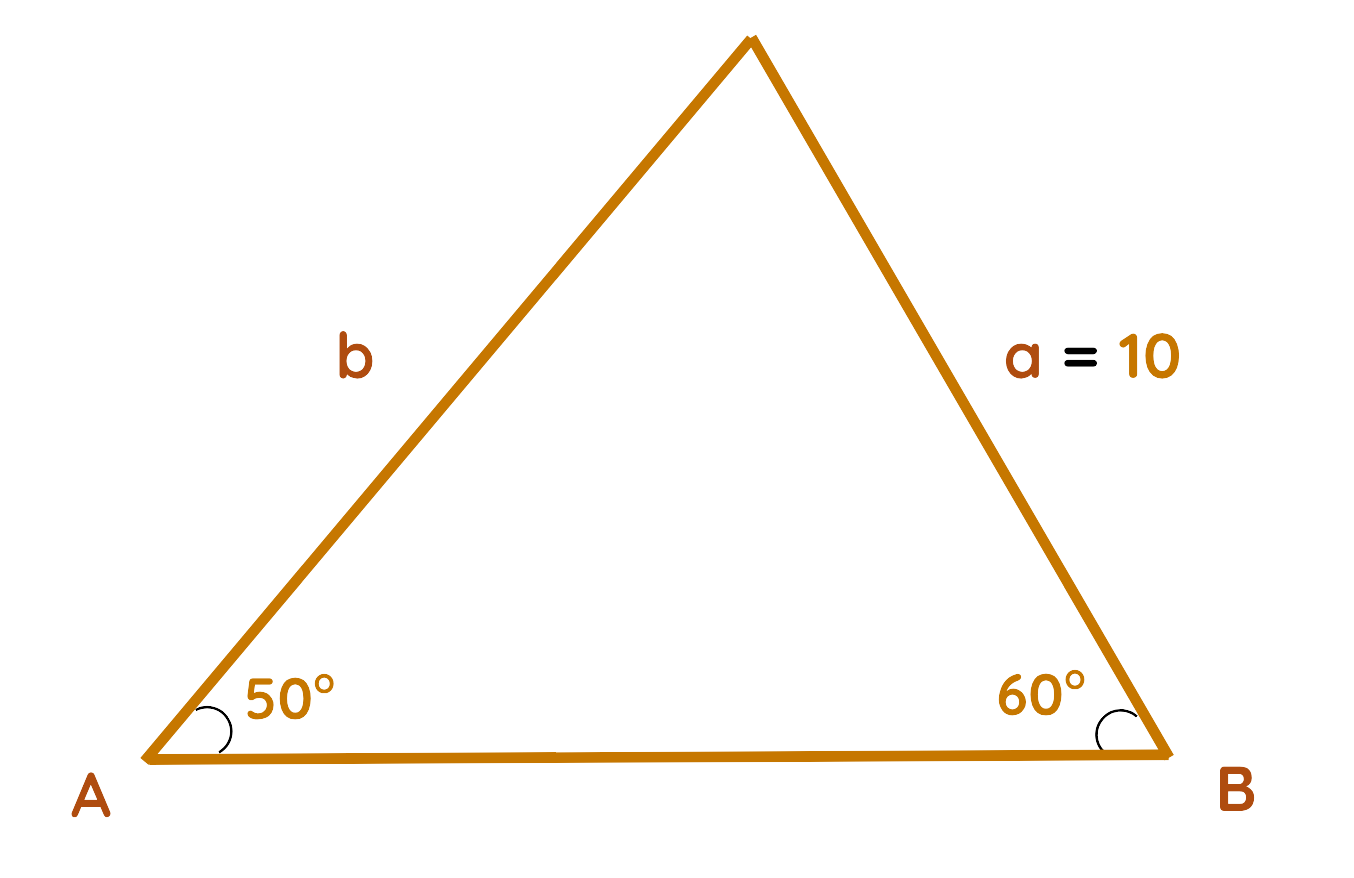
Solution:
Step#1: Given:
- Side a = 10cm
- Angle A = 50°
- Angle B = 60°
Step#2: Use The Formula:

Step#3: Plug the values:

Step#4: Solve for the missing Side:
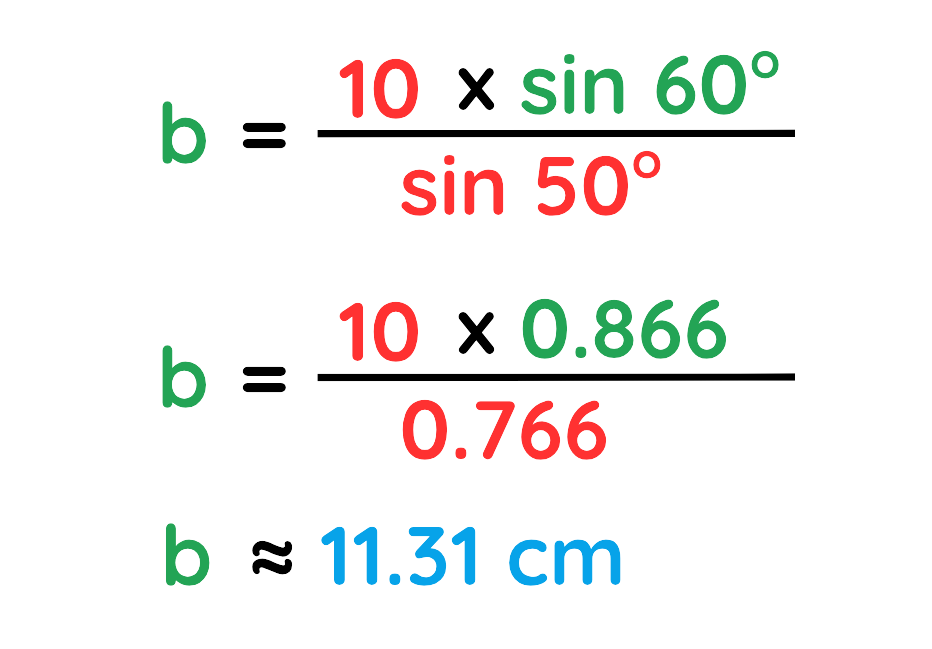
The Missing side of b ≈ 11.31 cm
Final Answer: b ≈ 11.31 cm

